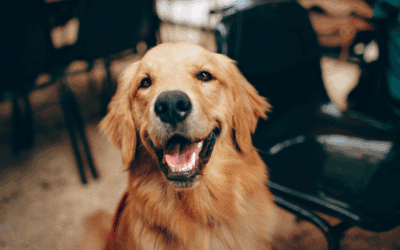Disclaimer: Kate’s K9 Pet Care proudly provides dog walking, cat sitting, small animal pet care, pet taxi services, “Almost Overnight” pet care, and convenient pet supply delivery.
For full details about each of our services, please visit our Service Pages to learn more about how we can support your pet’s needs. To see where we currently operate, please visit our Service Area Page.
If you’re thinking about adding a lovebird from the genus Agapornis to your family, consider a Fischer’s lovebird! These African parrots are small but spunky, and with the right training, can make loving pets.
Keep reading for everything you need to know about Fischer’s lovebirds and keeping Agapornis fischeri as a pet.
Fischer’s lovebird natural habitat
Named after the German explorer Gustav fischer, Agapornis fischeri was first discovered by Westerners in the late 1800s. The species is naturally found in Africa, mainly in Tanzania around Lake Victoria. Here, it inhabits grasslands as well as scrubby habitats where some trees are present.
Need Pet Care Fast?
Submit an Instant Service Request today and we’ll take care of the rest.
In their natural habitat, Fischer’s lovebirds are listed as near threatened by the IUCN, mostly due to export for the pet trade. Although you’re unlikely to find wild-caught Fischer’s lovebirds nowadays and their natural range is partly protected, their population numbers are still declining.
Did you know? Fischer’s lovebirds, like a bunch of other lovebird and other parrots, are an introduced species in some countries due to pets escaping and establishing feral populations. These include some US states, Portugal and, maybe most notably, France.
Fischer’s lovebird appearance
If you know a bit about lovebirds, it’s not too difficult to recognize a Fischer’s. Like other Agapornis varieties, they’re small, weighing in at about 48 grams. They’re compact, reaching a maximum length of only about 6”.
What sets this genus apart from other lovebirds are their prominent white eye rings combined with dark orange coloration that forms a gradient to green on the body. The tail tip is blue. We’re talking wild-type birds here, though, as this species has been selectively bred into a whole bunch of different colors for the pet trade. Among other colors, you can find them in blue, grey and white.
Housing for Fischer’s lovebird
If you’re interested in keeping a Fischer’s lovebird as a pet, keep in mind that although they are small, they do need plenty of space. For any parrot, the rule of thumb for cage size is that it depends on how often you plan to let the bird roam free.
If you will be giving your Fischer’s lovebird(s) access to an entire room for most of the day, you’ll be fine going with the recommended minimum cage size: at least around 24” in length. Things are a bit different if your bird will be in its cage for most of the day. If that’s the case, you should really be going for the biggest one you can fit into your home. A nice flight cage would be ideal, especially if it’s long rather than high.
Because parrots like the genus Agapornis have evolved to obtain amazing problem-solving skills and great intelligence, they need a lot of mental stimulation. Part of this can be provided by using a variety of toys, natural perches, ladders and other fun items in their cage. A parrot cage should never be bare!
Did you know? Like most other parrot species, Fischer’s lovebirds are not quiet beings by any means. They possess shrill voices and often spend most of the day emitting their squeaky chatters. Consider this before you bring one home.
Fischer’s lovebird diet
In the wild, Fischer’s lovebirds eat a diet based on seeds and fruits. Much to the dismay of local farmers, they’ll also congregate to eat agricultural products such as corn.
In captivity, don’t feed your lovebird a birdseed mix. Although this is the classic choice for parrots, it’s not actually good for them: birds fed a diet of dried seeds are often both overweight and malnourished. Instead, your Agapornis’ diet should be based on a high-quality pelleted parrot food.
For added variety and nutrients, offer fresh vegetables on a regular basis. You can also give your Fischer’s lovebird some fruits, cooked grains and even garden weeds like (insecticide-free) dandelion leaves.
In addition to a healthy diet, your Fischer’s should always have access to multiple sources of clean water.
Fischer’s lovebird personality
Like other parrot species, Fischer’s lovebirds are extremely social beings. In the wild, they can be found in flocks ranging from a dozen or so to hundreds, always in sync with each other in order to find the best food and water sources.
With domestic lovebirds, this means they need a lot of attention, either from fellow lovebirds or from you. Although they can be feisty and somewhat prone to biting with insufficient training, they can make amazing and extremely social pets. Properly tamed lovebirds will often love to hang out with their owners, being part of the action in the home. If you own a lone Fischer’s, you’ll have to make sure to have it around you for most of the day. After all, they quickly become lonely, which can cause unwanted behaviors like aggression or even feather plucking.
Fischer’s lovebirds are very energetic and curious. They love to play, explore, chatter and chew things up.
Did you know? It’s sometimes thought that lovebirds should never be kept alone and should always have a mate. Some also believe they die if their mate passes away; in Spanish, their common name is ‘inseparables’. Although it’s definitely preferable not to keep these birds (or most parrots, for that matter) alone, if you’re able to invest enough time in your Agapornis, it’s an option.
Conclusion
Good things do come in small packages! Fischer’s lovebirds are balls of energy that can be feisty, but with the right training they can also make amazingly loving pets. With a lovebird in your home, you’ll definitely never be bored again.










